When it comes to maximizing space in a rental, DIY room dividers are a fantastic solution. They allow you to create distinct areas within a single room without making any permanent changes. Whether you need to separate a bedroom from a living area or create a cozy nook for work, these budget-friendly ideas can help you achieve your desired layout.
Room dividers offer numerous advantages for renters. They enhance privacy, allowing you to enjoy your personal space without interruptions. Additionally, they improve organization by helping you designate areas for different activities. This separation can be particularly beneficial in small apartments, where space is at a premium.
Choosing the right room divider involves considering your room’s layout and your personal style. Ask yourself what function you want the divider to serve. Do you need it to block noise, create visual separation, or simply add a decorative touch? By answering these questions, you can select a divider that meets both your aesthetic and practical needs.
When it comes to materials, there are several options that can fit any budget:
- Wooden Pallets: Affordable and versatile, they can be easily transformed into rustic dividers.
- Fabric: Curtains or drapes can provide a soft, flexible barrier that can be easily adjusted.
- Bookshelves: Functional and stylish, they double as storage while dividing spaces.
There are countless creative ways to implement room dividers in your home:
- Using Bookshelves: They not only divide space but also offer storage for books and decor.
- Hanging Plants: Incorporating greenery can enhance privacy and improve air quality.
- Folding Screens: Easy to make and customizable, they can be moved as needed.
- Art Displays: Using art as a divider adds personality and serves as a functional barrier.
Creating a folding screen is an easy DIY project. Start by gathering materials like wooden frames or canvas panels. You can paint or decorate them to match your decor. This portable solution allows you to adjust your space as needed, making it a perfect fit for renters.
To ensure your DIY room divider remains functional and attractive, regular maintenance is key. Keep it clean and check for any signs of wear. If you’ve used fabric, consider washing or refreshing it periodically. For wooden dividers, apply a protective finish to prevent damage.
In conclusion, DIY room dividers are a practical and stylish solution for renters looking to optimize their living space. With a variety of materials and creative ideas at your disposal, you can easily create a personalized atmosphere that reflects your style while enhancing functionality.
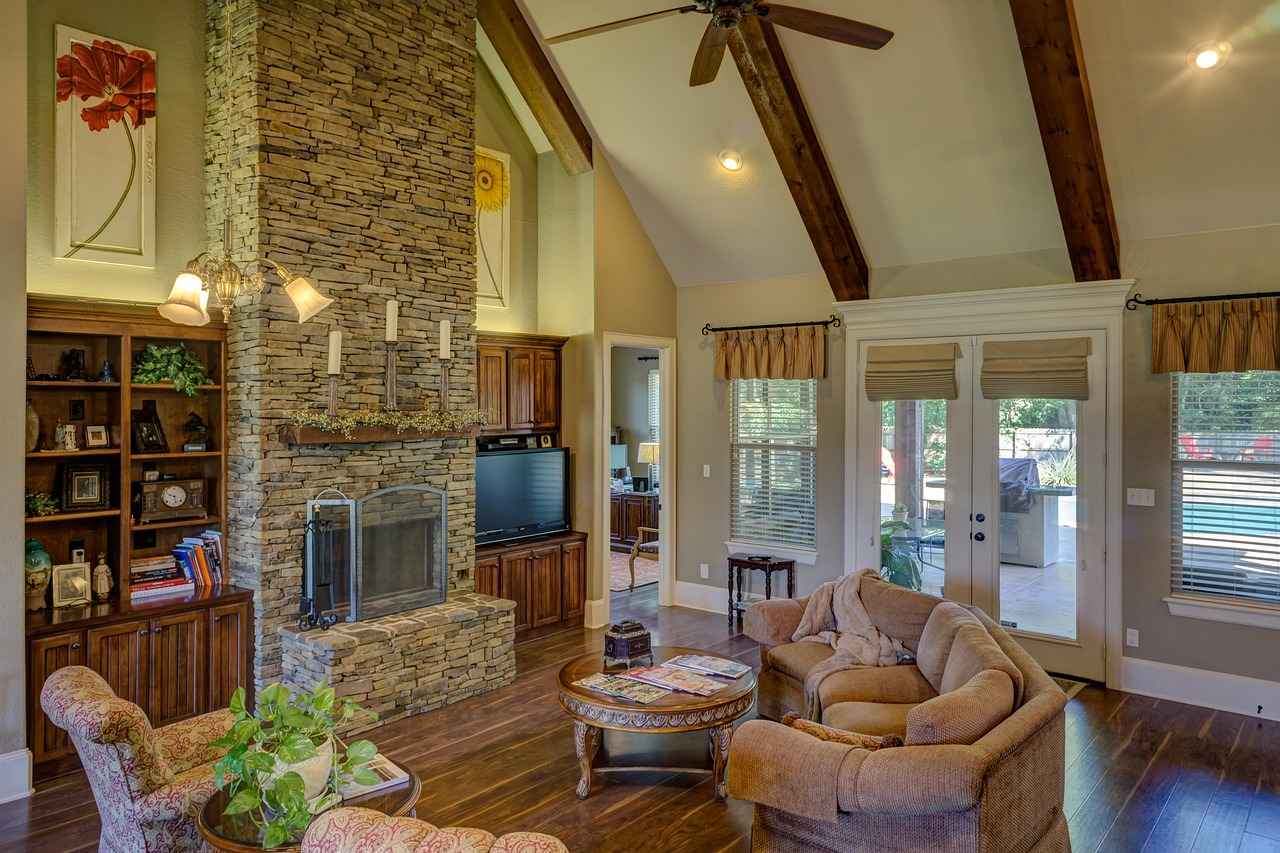
What Are the Benefits of Using Room Dividers?
Room dividers have become increasingly popular in modern living spaces, especially among renters seeking to maximize their environment without making permanent changes. These versatile solutions not only enhance the aesthetic appeal of a room but also provide practical benefits that cater to various needs.
Using room dividers offers a multitude of advantages that can significantly improve the functionality and comfort of your living space. Here are some of the key benefits:
- Enhanced Privacy: One of the primary advantages of room dividers is the ability to create private spaces within a larger area. This is particularly beneficial in shared living situations, such as roommates or families, where individuals may need their own space for work or relaxation.
- Improved Organization: Room dividers help in organizing a space effectively. By segmenting areas, you can designate specific zones for different activities, such as a workspace, a sleeping area, or a recreational zone, making it easier to keep your environment tidy and functional.
- Distinct Areas: A room divider allows you to create distinct areas within a single room, enhancing the overall flow and usability of the space. This is especially useful in studios or open-plan apartments, where defining areas can help in reducing clutter and chaos.
- Flexibility: Many room dividers are portable and easy to move, allowing you to adjust your layout as needed. This flexibility is ideal for renters who may want to change their space frequently without the need for permanent installations.
- Style and Aesthetics: Room dividers come in various styles, materials, and designs, enabling you to choose options that complement your existing decor. Whether you prefer a modern look or a more traditional feel, there’s a room divider that can enhance the visual appeal of your space.
- Cost-Effective Solution: For renters, investing in room dividers can be a cost-effective way to transform a space without the expense of renovations. DIY options can further reduce costs while allowing for personalization.
- Noise Reduction: Certain room dividers can also help in reducing noise between areas, which is particularly useful in shared living environments where sound can travel easily.
In summary, room dividers are not just functional; they also provide a range of benefits that enhance the living experience. By incorporating these elements into your home, you can enjoy increased privacy, improved organization, and a more aesthetically pleasing environment, all while maintaining the flexibility that renters require.

How to Choose the Right Room Divider for Your Space?
When it comes to maximizing your living space, selecting the right room divider is crucial. A well-chosen divider not only enhances the aesthetics of your space but also serves practical purposes. Here’s how to make an informed decision.
The first step in choosing a room divider is to assess your space’s layout. Consider the following:
- Room Size: Measure your room to understand the available space for a divider. A large room may benefit from a substantial divider, while smaller spaces might require something more subtle.
- Flow of Movement: Ensure that the divider does not obstruct natural pathways. A good divider should enhance the flow rather than disrupt it.
Your personal style plays a significant role in the type of room divider you choose. Here are a few styles to consider:
- Modern: Sleek materials like glass or metal can provide a contemporary look.
- Rustic: Wooden dividers or pallets can add warmth and charm.
- Bohemian: Fabric or macramé dividers can introduce texture and color.
Understanding the functionality you need from a room divider is essential:
- Privacy: If you need to create a private area, opt for more solid dividers.
- Flexibility: For versatile spaces, consider curtains or folding screens that can be easily adjusted.
- Storage: Bookshelves can serve as both dividers and storage units, maximizing functionality.
The materials used for the room divider can significantly impact both its look and functionality. Here are some popular choices:
- Wood: Durable and aesthetically pleasing, wood can be used in various styles.
- Fabric: Softens a space and offers flexibility; great for renters.
- Metal: Provides an industrial touch and is often very sturdy.
Finally, consider your budget. Room dividers come in a wide range of prices, so it’s important to find one that fits your financial plan:
- DIY Options: If you’re handy, creating your own divider can save money.
- Thrift Stores: Look for unique dividers at thrift shops or online marketplaces.
- Buy New: If you prefer convenience, many retailers offer affordable options.
By taking into account your space’s layout, personal style, required functionality, material preferences, and budget, you can confidently choose the right room divider that meets your needs. This thoughtful approach ensures that your divider enhances not only the look of your space but also its practicality.
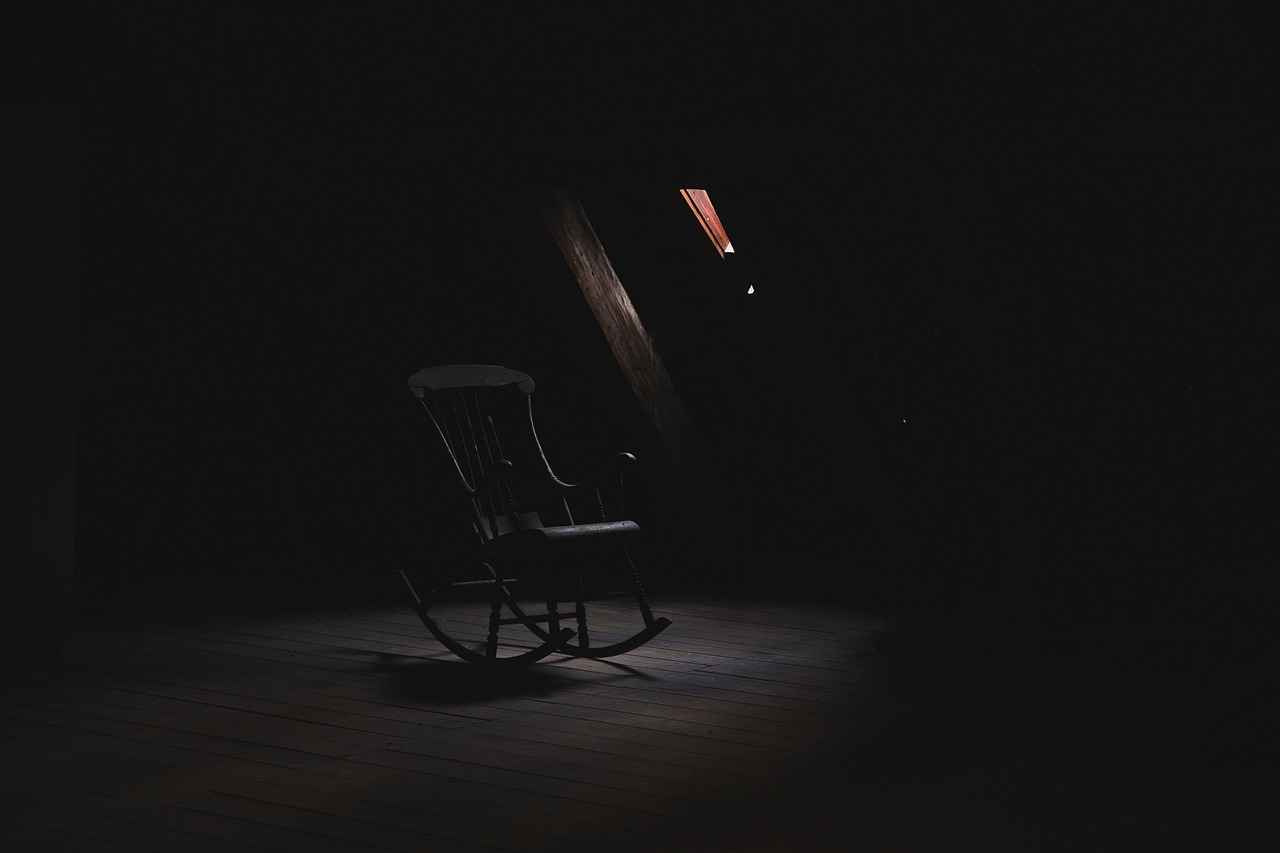
Best Materials for DIY Room Dividers
When it comes to creating a functional and aesthetically pleasing space, DIY room dividers can play a pivotal role. Understanding the various materials available for these dividers can significantly impact your choice, ensuring it complements your decor while remaining cost-effective and easy to work with. Below, we explore the best materials for DIY room dividers, providing insights into their unique benefits and applications.
Choosing the right material for your room divider is essential. The ideal material should be affordable, durable, and easy to work with. Additionally, it should align with your personal style and the overall aesthetic of your space. Below are some popular materials that meet these criteria:
- Wood: Wood is a timeless choice for room dividers. It offers stability and versatility, allowing for various designs, from rustic to modern. Wooden dividers can be made from reclaimed wood or new materials, making them both eco-friendly and stylish.
- Fabric: Fabric dividers are an excellent way to introduce color and texture into your space. They can be easily hung from a curtain rod or tension wire, providing a soft and flexible solution that can be adjusted as needed.
- Metal: For a more industrial look, metal dividers can be a striking choice. Materials such as wrought iron or aluminum can create a modern and sleek appearance, making them perfect for contemporary interiors.
- Cardboard: An unexpected yet innovative option, cardboard can be used to create lightweight and affordable dividers. With some creativity, you can paint or decorate cardboard to match your decor.
- Glass: Glass dividers can make a room feel larger and more open. They allow light to flow through while providing a visual barrier. Frosted or etched glass can add privacy without sacrificing style.
When selecting a material for your DIY room divider, consider the following factors:
- Space Size: In smaller spaces, lighter materials like fabric or cardboard can help maintain an open feel, while larger areas may benefit from sturdier options like wood or metal.
- Functionality: Determine whether your divider needs to be permanent or temporary. For flexible spaces, lightweight materials are preferable.
- Style Preferences: Choose a material that aligns with your existing decor. A cohesive look can enhance the overall aesthetic of your home.
- Budget: Consider your budget constraints. Materials like wood and fabric can vary widely in price, so it’s essential to find options that fit your financial plan.
Absolutely! Once you’ve selected your material, consider these DIY techniques:
- Painting or Staining: Personalize wooden dividers with paint or stain to match your decor.
- Adding Shelves: Incorporate shelves into your wooden dividers for added functionality and storage.
- Using Plants: Attach hanging plants to fabric dividers for a natural touch that brings life to your space.
By understanding the different materials available for DIY room dividers, you can make an informed choice that enhances your living space. Whether you opt for the warmth of wood, the flexibility of fabric, or the modern appeal of metal, the right divider can transform your home while maintaining your unique style.
Wooden Pallets as Room Dividers
When it comes to creating unique and functional spaces within your home, wooden pallets stand out as an ideal choice for DIY room dividers. Their affordability and versatility make them a popular option among renters and DIY enthusiasts alike. In this article, we will explore the various benefits of using wooden pallets as room dividers, along with some creative ideas to inspire your next project.
Wooden pallets are not only cost-effective, but they also offer a rustic charm that can enhance the aesthetic of any room. Here are some reasons why they are a great choice:
- Easy to Source: Wooden pallets are often available for free or at a low cost from local businesses, making them an economical option for DIY projects.
- Customizable: They can be easily sanded, painted, or stained to match your decor, allowing for endless design possibilities.
- Lightweight and Portable: Unlike traditional dividers, wooden pallets are relatively light, making it easy to move them around as your needs change.
Creating a room divider from wooden pallets is a straightforward process that requires minimal tools and skills. Here’s a simple guide to get you started:
1. Gather Materials: - Wooden pallets - Sandpaper - Paint or wood stain (optional) - Hinges (for a folding design) - Screws2. Prepare the Pallets: - Sand the pallets to remove rough edges and splinters. - Apply paint or stain if desired, allowing it to dry completely.3. Assemble the Divider: - If creating a folding screen, connect pallets using hinges. - For a fixed divider, secure the pallets in an upright position using brackets.4. Decorate: - Add hooks for hanging plants or decorative items. - Incorporate lighting for a cozy atmosphere.
Wooden pallets can be transformed into various styles of room dividers. Here are some creative ideas:
- Vertical Garden: Attach pots to the pallets to create a living wall that not only divides space but also adds greenery.
- Art Display: Use the pallets as a backdrop to showcase artwork or photographs, turning a functional piece into a focal point.
- Multi-Functional Shelving: Incorporate shelves into the design for added storage, allowing you to display books, plants, or decorative items.
To ensure your wooden pallet room divider lasts, consider the following maintenance tips:
- Regular Cleaning: Dust and clean the pallets periodically to prevent dirt buildup.
- Inspect for Damage: Check for any signs of wear or damage, and repair as necessary to maintain structural integrity.
- Reapply Finish: If you used paint or stain, reapply every couple of years to keep the wood protected and looking fresh.
In summary, wooden pallets offer a stylish and affordable solution for renters looking to create room dividers that are both functional and aesthetically pleasing. With a bit of creativity and effort, you can transform simple pallets into a unique feature that enhances your living space.
Fabric Curtains for Flexible Spaces
Fabric curtains are an excellent choice for renters seeking to create flexible and inviting spaces within their homes. These versatile dividers not only enhance the aesthetic appeal of a room but also provide a practical solution for dividing areas without the need for permanent installations. By incorporating fabric curtains, you can easily adjust the layout of your space to suit your needs, making them a popular option for those looking to maximize functionality.
Fabric curtains offer numerous benefits that make them a preferred choice for room dividers:
- Flexibility: Curtains can be drawn open or closed, allowing you to modify the space as needed.
- Softness: The texture of fabric adds warmth and comfort, creating a cozy atmosphere.
- Variety: Available in countless colors, patterns, and materials, fabric curtains can easily match your existing decor.
- Easy Installation: Most fabric curtains can be hung using tension rods or hooks, ensuring a hassle-free setup.
When choosing fabric for your curtains, consider the following:
- Opacity: Decide if you want sheer curtains for light filtering or heavier fabrics for privacy.
- Durability: Look for fabrics that can withstand wear and tear, especially in high-traffic areas.
- Maintenance: Choose materials that are easy to clean, as curtains can collect dust and allergens.
Fabric curtains can be utilized in various creative ways to enhance your living space:
- Creating Cozy Nooks: Use curtains to define a reading corner or a small workspace within a larger room.
- Temporary Guest Spaces: Hang curtains to create a private sleeping area for guests without the need for permanent walls.
- Visual Interest: Choose bold patterns or colors to make a statement and add character to your space.
To achieve the best results when hanging fabric curtains:
1. Measure the area where you want to install the curtains.2. Choose the appropriate rod length and style based on your design.3. Install brackets securely to ensure stability.4. Hang the curtains and adjust the pleats for a polished look.
Proper maintenance of your fabric curtains is essential to keep them looking fresh:
- Regular Cleaning: Vacuum or shake out curtains to remove dust.
- Washing: Follow the care instructions for your fabric; some may be machine washable, while others may require dry cleaning.
- Storage: If you change your decor seasonally, store curtains in a cool, dry place to prevent damage.
Incorporating fabric curtains as room dividers not only enhances the functionality of your living space but also adds a touch of elegance and personalization. With their flexibility, ease of installation, and vast array of design options, fabric curtains are a smart choice for renters looking to create stylish and adaptable environments.
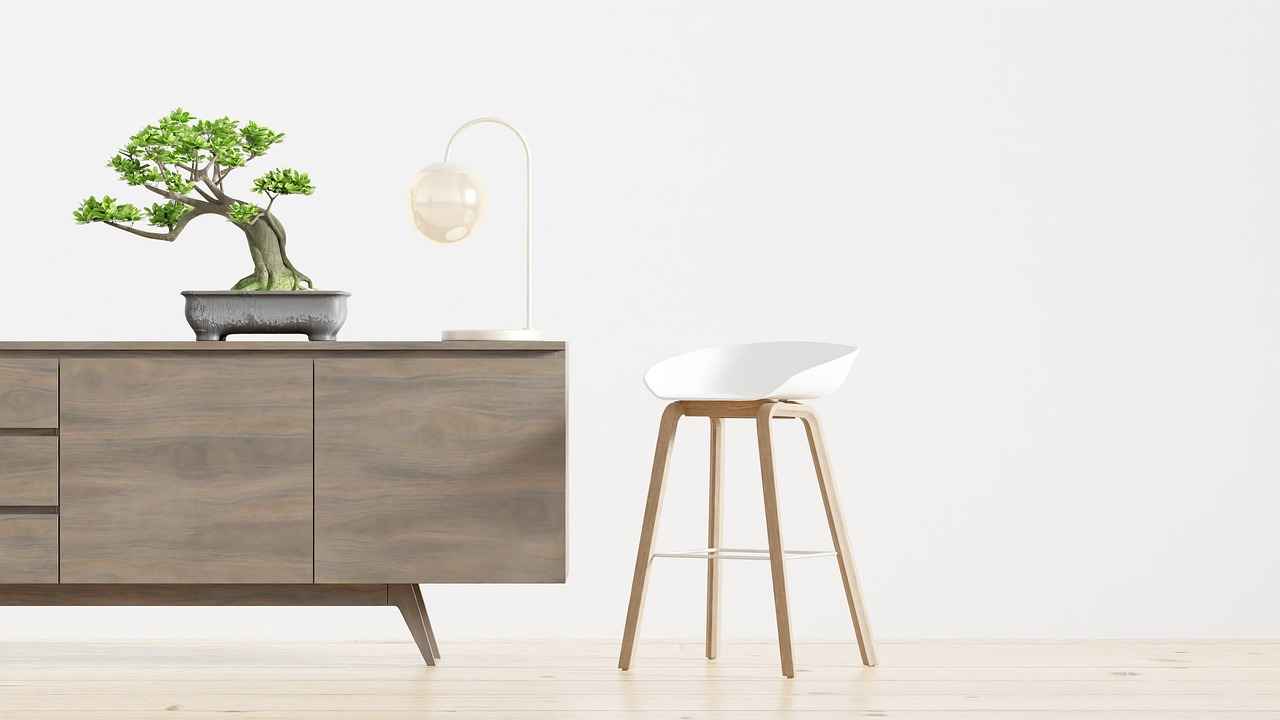
Creative Ideas for DIY Room Dividers
When it comes to maximizing space in rental homes, DIY room dividers can be a game changer. They not only provide functionality but also allow you to express your personal style without making permanent changes. Here are some creative ideas for DIY room dividers that are both affordable and easy to implement.
DIY room dividers are perfect for renters due to their flexibility and cost-effectiveness. They can enhance the aesthetic of your living area while providing privacy and organization. The beauty of DIY projects lies in their customizability, allowing you to tailor the divider to fit your specific needs.
Shelving units are an excellent choice for a room divider that combines functionality with style. They can be used to display books, plants, or decorative items, creating a visual barrier while also providing storage. Consider using open shelving to maintain a sense of openness in the room.
Using fabric curtains as room dividers offers a soft, inviting look. They can be easily opened or closed depending on your needs, making them a versatile option. Choose fabrics that match your decor or add a pop of color to brighten up the space.
Wooden pallets are a popular and eco-friendly option for DIY room dividers. They can be stacked or arranged in various configurations to create a rustic yet stylish look. Sand them down and apply a coat of paint or stain to match your interior design.
Incorporating art into your room divider can add personality and flair. Consider hanging large canvases or a series of framed pictures on a wall-mounted grid. This not only divides the space but also serves as a stunning focal point.
Utilizing hanging plants as a room divider brings a touch of nature indoors. They create a living barrier that enhances privacy while improving air quality. Use macramé hangers or wall-mounted planters to achieve this look.
A folding screen is a simple DIY project that can be customized to fit your style. Use lightweight materials such as canvas or plywood, and paint or decorate them to match your decor. Folding screens can be easily moved and stored when not in use, making them a practical choice.
To ensure the longevity of your DIY room divider, regular maintenance is key. Dust surfaces, check for any wear and tear, and make necessary repairs to keep your divider looking fresh. This will help maintain the overall aesthetic of your living space.
In conclusion, DIY room dividers are an excellent way to enhance your living space while staying within budget. From shelving units to fabric curtains and creative art displays, the possibilities are endless. With a little creativity and effort, you can transform your space into a functional and stylish environment.
Using Bookshelves as Dividers
When it comes to maximizing space in a rental, bookshelves stand out as a versatile solution. Not only do they serve as functional storage units, but they also act as stylish room dividers, providing an effective way to delineate different areas within a single room. This dual-purpose functionality makes them an excellent choice for renters who want to create a sense of separation without making permanent alterations to their living space.
Bookshelves offer several benefits that make them ideal for use as room dividers:
- Functionality: They provide ample storage for books, decor, and personal items, helping to keep your space organized.
- Style: Available in various designs, colors, and materials, bookshelves can complement your existing decor and enhance the overall aesthetic of your room.
- Flexibility: Unlike traditional walls, bookshelves can be moved or rearranged easily, allowing you to adapt your space as needed.
- Visual Interest: A well-styled bookshelf can serve as a focal point in your room, drawing attention and adding character.
To effectively use bookshelves as room dividers, consider the following styling tips:
- Layered Decor: Use a mix of books, plants, and decorative items to create a visually appealing display. This layering adds depth and interest.
- Color Coordination: Choose items that complement your color scheme. This will help the bookshelf blend seamlessly into the room while still serving as a divider.
- Lighting: Incorporate LED strip lights or small lamps on top of the bookshelf to create a warm ambiance and highlight your decor.
When selecting a bookshelf to use as a room divider, consider the following factors:
- Size: Ensure the bookshelf is appropriately sized for your space. A tall, narrow bookshelf can create a striking visual without overwhelming the room.
- Material: Wooden bookshelves offer a classic look, while metal or acrylic options can provide a modern touch. Choose a material that aligns with your style.
- Open vs. Closed Storage: Open bookshelves allow light to pass through, making the space feel larger, while closed bookshelves can provide more storage and a cleaner look.
If you’re feeling creative, consider these DIY ideas for your bookshelf room divider:
- Repurposed Pallets: Use wooden pallets to create a rustic bookshelf that can be painted or stained to fit your decor.
- Modular Shelving: Invest in modular shelving units that can be configured in various ways, allowing you to customize the layout as your needs change.
- Fabric Backing: Add fabric or wallpaper to the back of your bookshelf for a pop of color or pattern that enhances the overall look.
In summary, using bookshelves as room dividers is a practical and stylish solution for renters. They not only provide essential storage but also allow for creative expression in your living space. By carefully selecting and styling your bookshelf, you can achieve a functional and aesthetically pleasing separation of areas within your home.
Hanging Plants for a Natural Touch
In recent years, the use of hanging plants as room dividers has gained popularity among renters and homeowners alike. This innovative approach not only introduces a touch of nature into your living space but also serves multiple functional purposes. By strategically placing hanging plants, you can create a visually appealing barrier that enhances both privacy and air quality.
Hanging plants offer a unique solution for dividing spaces without the need for permanent installations. Here are some compelling benefits:
- Natural Aesthetics: Greenery brings life and vibrancy to any room, making it feel more inviting.
- Privacy Enhancement: A well-placed row of hanging plants can obscure sightlines, creating a sense of seclusion.
- Improved Air Quality: Plants are known to purify the air, making your environment healthier.
- Space Optimization: Hanging plants utilize vertical space, freeing up floor area for other uses.
When selecting hanging plants, consider species that thrive in your specific environment. Here are some popular choices:
- Spider Plants: Known for their air-purifying qualities and ease of care.
- Pothos: A hardy plant that grows well in various lighting conditions.
- String of Pearls: This succulent adds a unique texture and visual interest.
- Boston Fern: Excellent for humid environments, providing lush greenery.
To maximize the benefits of hanging plants as room dividers, consider these arrangement tips:
- Layering: Use plants of varying heights to create depth and visual intrigue.
- Spacing: Ensure plants are spaced adequately to allow for growth and maintenance.
- Lighting: Position plants according to their light requirements to ensure healthy growth.
Here are some innovative ways to use hanging plants as room dividers:
- Macrame Hangers: Use macrame plant hangers to add a bohemian touch while effectively dividing space.
- Floating Shelves: Install floating shelves to hold multiple plants at different heights.
- Vertical Gardens: Create a vertical garden wall with a variety of plants for a stunning visual impact.
To keep your hanging plant dividers looking their best, follow these maintenance tips:
- Regular Watering: Ensure plants receive the appropriate amount of water based on their individual needs.
- Pruning: Regularly prune dead leaves and stems to encourage healthy growth.
- Fertilizing: Use a balanced fertilizer to provide essential nutrients, especially during the growing season.
Incorporating hanging plants as room dividers not only beautifies your space but also offers practical benefits such as enhanced privacy and improved air quality. With a little creativity and care, you can transform your living area into a lush, green oasis that meets your functional needs while reflecting your personal style.
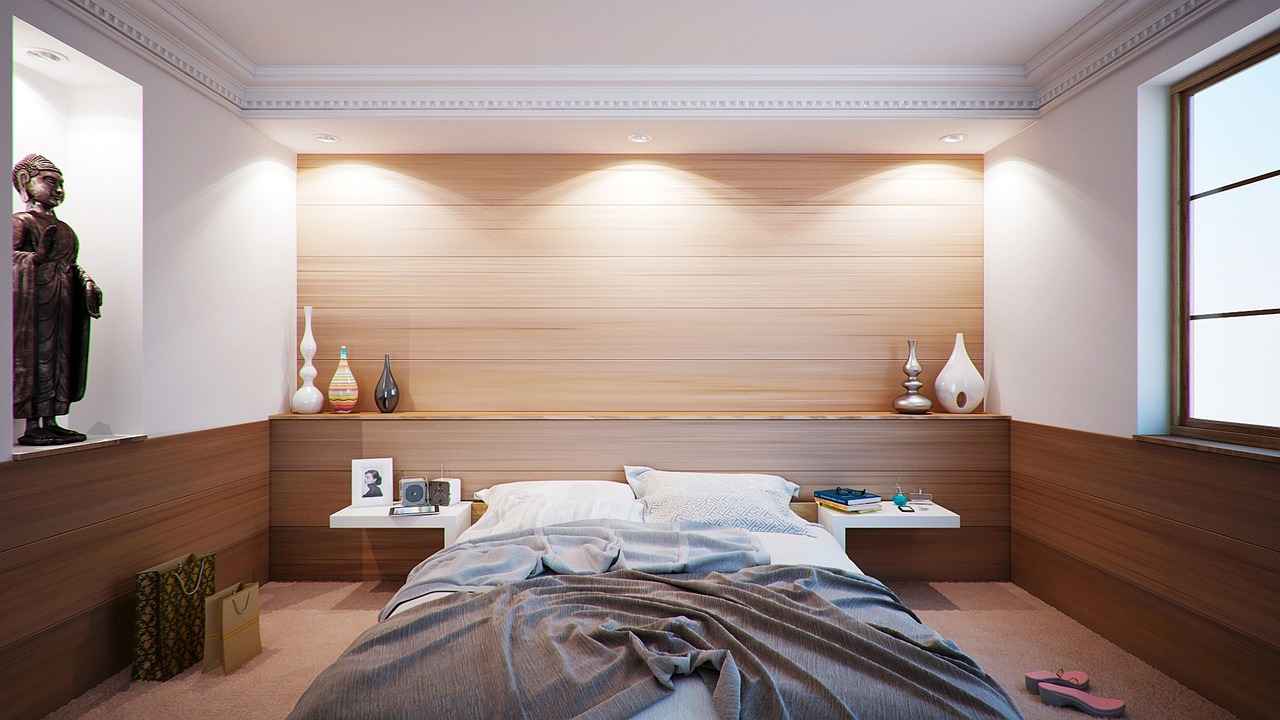
How to Make a Simple Folding Screen?
Creating a simple folding screen is not only a fun DIY project but also a practical solution for renters who want to add style and functionality to their living spaces. This guide will walk you through the steps to make a folding screen that is both customizable and portable, allowing you to separate areas within your home effortlessly.
Before diving into the construction process, gather the necessary materials:
- Wooden boards or canvas panels (depending on your desired look)
- Hinges (to allow the screen to fold)
- Paint or fabric (for customization)
- Screws and a screwdriver
- Sandpaper (if using wood)
- Measuring tape and pencil for measurements
Follow these steps to create your own folding screen:
- Measure Your Space: Determine the dimensions of your folding screen based on the area you want to divide. Consider height and width to ensure it fits well in your room.
- Cut the Panels: If using wooden boards, cut them to your desired size. For canvas, measure and cut the fabric accordingly. Ensure all pieces are uniform for a polished look.
- Sand the Edges: If you opted for wood, use sandpaper to smooth the edges of each panel. This step is crucial for safety and aesthetics.
- Paint or Cover: Customize your panels by painting them or covering them with fabric. This is where you can express your personal style. Allow sufficient drying time if painting.
- Attach Hinges: Position the panels side by side and attach hinges at the edges to connect them. Make sure they are aligned properly to allow for smooth folding.
- Test the Folding Mechanism: Once the hinges are attached, test the folding mechanism to ensure it operates smoothly. Adjust if necessary.
A folding screen is an ideal choice for renters for several reasons:
- Portability: Easily move it around or take it with you when you relocate.
- Customization: Personalize it to match your decor, from colors to patterns.
- Versatility: Use it to create distinct areas for work, relaxation, or privacy without permanent alterations.
To make your folding screen even more functional and stylish, consider the following:
- Incorporate Storage: Attach small shelves or hooks for added functionality.
- Add Lighting: Consider string lights or small lamps to create a cozy atmosphere.
- Use as a Display: Hang art or photographs on the screen to showcase your creativity.
By following these steps, you can create a beautiful and functional folding screen that not only serves as a room divider but also enhances the overall aesthetic of your space. This DIY project is a fantastic way to express your creativity while making your living area more organized and stylish.
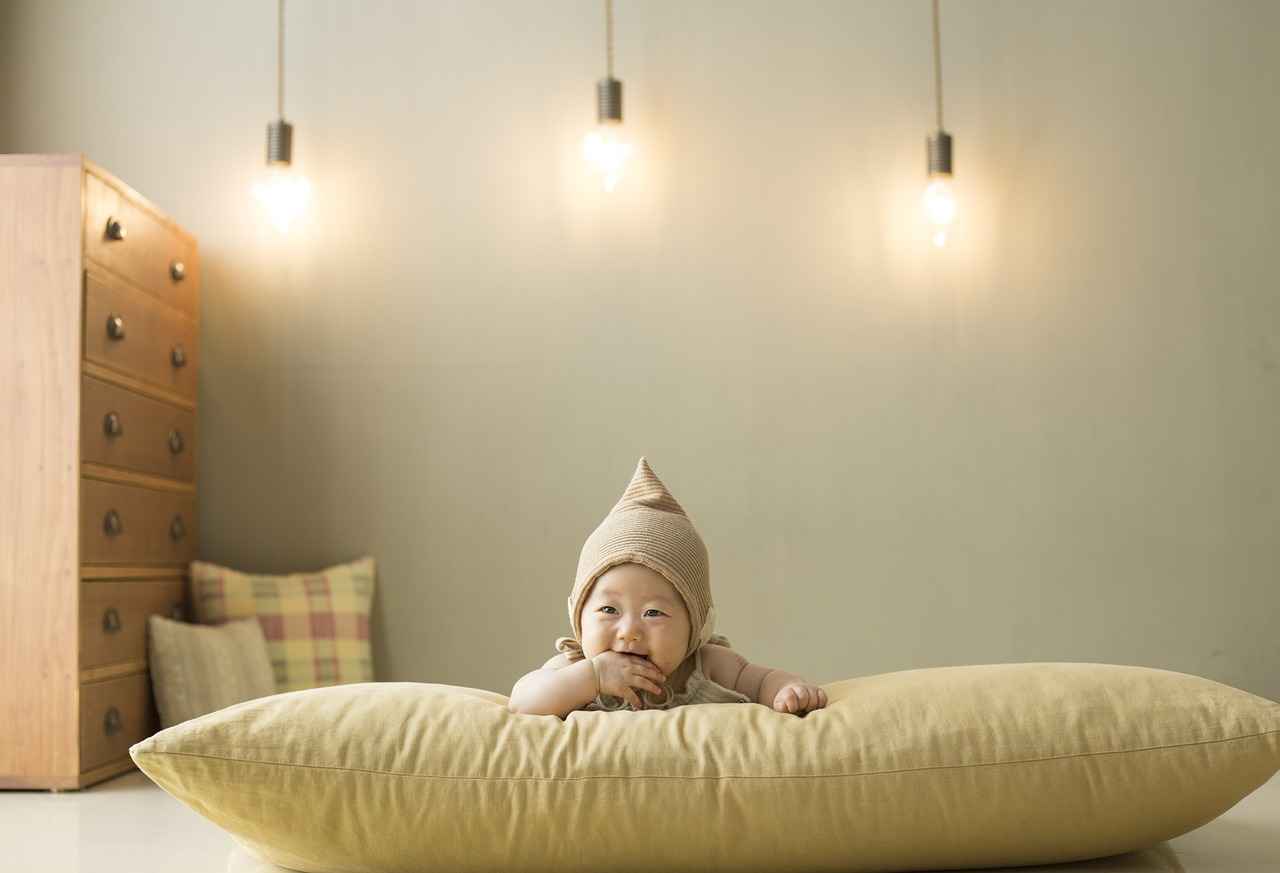
Incorporating Art into Your Room Divider
Incorporating art into your room divider is a fantastic way to not only enhance the aesthetic appeal of your living space but also to express your personal style. By using art as a functional element in your home, you can create a distinctive atmosphere that reflects your creativity and passion.
Using art as a room divider serves multiple purposes. Firstly, it allows for the creation of distinct areas within an open space while adding a visual focal point. This can be especially beneficial in studio apartments or shared living spaces where privacy is often limited. Additionally, art dividers can help in defining spaces for different activities, such as a cozy reading nook or a workspace, without the need for permanent installations.
- Framed Art Pieces: Large framed paintings or prints can be hung on a wall-mounted shelf or suspended from the ceiling, creating an eye-catching barrier.
- Canvas Panels: Lightweight and easy to customize, canvas panels can be painted or printed with your favorite designs, making them a versatile choice.
- Artistic Screens: Folding screens adorned with artistic designs can be easily moved and adjusted, allowing for flexibility in your layout.
- Wall Murals: A mural can serve as a stunning backdrop while effectively dividing spaces, making it an excellent choice for larger areas.
Creating an artistic room divider can be both simple and enjoyable. Here are some steps to guide you:
- Choose Your Art: Select pieces that resonate with you and complement your existing decor. Consider colors, themes, and styles.
- Decide on the Structure: Determine how you will display the art. Options include hanging it on a wall, using a freestanding frame, or creating a mobile divider.
- Consider Lighting: Proper lighting can enhance the beauty of your art. Use spotlights or ambient lighting to highlight your divider.
- Personal Touch: Add personal elements like photographs or handmade crafts to make the divider unique to your space.
Artistic room dividers offer numerous advantages. They not only provide visual interest but also contribute to the overall ambiance of your home. Here are some key benefits:
- Enhanced Privacy: Art dividers can create a sense of enclosure, allowing for more intimate spaces.
- Sound Absorption: Depending on the materials used, art dividers can help reduce noise between areas.
- Easy to Change: Unlike permanent walls, art dividers can be easily swapped out or updated, keeping your space fresh and exciting.
To ensure your artistic room divider remains in excellent condition, consider the following maintenance tips:
- Regular Cleaning: Dust and clean your art pieces regularly to maintain their vibrancy and appeal.
- Check Stability: Ensure that any freestanding dividers are stable and secure to prevent accidents.
- Update Periodically: Refresh your divider with new art or rearrangements to keep your space feeling dynamic.
In summary, incorporating art into your room divider can significantly enhance your living space’s functionality and style. By selecting the right pieces and maintaining them properly, you can create a unique atmosphere that reflects your personality while effectively dividing your space.

Tips for Maintaining Your DIY Room Divider
When it comes to enhancing your living space, a DIY room divider serves not only as a functional element but also as a stylish addition to your decor. However, to ensure that your divider remains both aesthetically pleasing and practical, proper maintenance is essential. Here are some valuable tips to help you maintain your DIY room divider effectively.
Regular maintenance of your room divider is crucial for several reasons:
- Longevity: Proper care extends the life of your divider, saving you money on replacements.
- Functionality: Keeping your divider in good condition ensures it serves its purpose effectively.
- Aesthetic Appeal: A well-maintained divider keeps your space looking fresh and organized.
Different materials require different cleaning methods. Here are some common materials and their maintenance tips:
- Wood: Use a soft cloth and a gentle wood cleaner to avoid damaging the finish. Regular dusting will keep it looking new.
- Fabric: Vacuum fabric dividers regularly to remove dust. For stains, refer to the care label for specific cleaning instructions.
- Metal: Wipe down metal dividers with a damp cloth to remove fingerprints and smudges. Avoid abrasive cleaners that can scratch the surface.
Regularly inspect your DIY room divider for any signs of wear and tear:
- Check for Loose Parts: Tighten screws or bolts that may have come loose over time.
- Look for Cracks or Splits: Wooden dividers may develop cracks; apply wood glue to fix minor issues.
- Assess Stability: Ensure that your divider stands firm and does not wobble, especially if it’s freestanding.
Over time, the color or fabric of your room divider may fade or become outdated. Consider:
- Repainting: A fresh coat of paint can rejuvenate a wooden divider. Choose a color that complements your current decor.
- Reupholstering: For fabric dividers, consider changing the fabric to reflect your evolving style. This is an excellent opportunity to use trendy patterns or colors.
If you need to move or store your room divider, proper handling is key:
- Disassemble if Necessary: If your divider is large, consider disassembling it for easier transport and storage.
- Keep it Dry: Store your divider in a dry place to prevent moisture damage, especially for wooden and fabric dividers.
By following these maintenance tips, you can ensure that your DIY room divider remains functional and visually appealing for years to come. Regular cleaning, inspection, and timely repairs will keep your space organized and stylish, allowing you to enjoy the benefits of your creative project without the hassle of unnecessary repairs.
Frequently Asked Questions
- What are the advantages of using room dividers?
Room dividers can transform your living space by providing enhanced privacy, creating distinct areas for different activities, and improving overall organization. They’re perfect for renters wanting to maximize their space without making permanent changes!
- How do I choose the right room divider?
Choosing the right room divider involves considering your space layout, your personal style, and the functionality you need. Think about how you want to use the space and select a divider that complements your decor while serving your purpose.
- What materials are best for DIY room dividers?
Popular materials for DIY room dividers include wooden pallets, fabric curtains, and bookshelves. Each option offers unique benefits, so pick one that fits your aesthetic and budget!
- Can I use plants as room dividers?
Absolutely! Incorporating hanging plants not only adds a touch of nature to your home but also creates a beautiful, organic barrier that enhances privacy and improves air quality.
- How do I maintain my DIY room divider?
To keep your DIY room divider looking fresh, regular cleaning and occasional repairs are key. Make sure to check for any wear and tear, and address issues promptly to ensure longevity!














